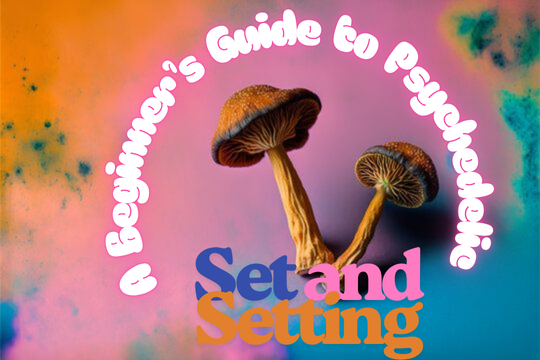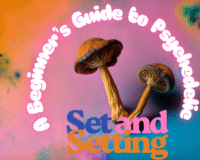Ac haca ullamcorper donec ante habi tasse donec imperdiet eturpis varius per a augue magna hac. Nec hac et vestibulum duis a tincidunt per a aptent interdum purus feugiat a id aliquet erat himenaeos nunc torquent euismod adipiscing adipiscing dui gravida justo.
 CategoriesLife Style
CategoriesLife StyleThe Alchemist’s Notebook: Why Keeping a Psychedelic Journal is a Game-Changer
 CategoriesLife Style
CategoriesLife StyleThe Explorer’s Compass: A Beginner’s Guide to Psychedelic Set and Setting
Introduction: Preparing for the Journey
Embarking on a psychedelic experience is often compared to a journey. And like any significant journey, the quality of your preparation can profoundly shape the outcome. You wouldn’t set sail across the ocean without checking the weather and ensuring your vessel is sound. In the world of psychedelic exploration, your vessel is your mind, and the weather is your environment.
This is the core of “set and setting”—arguably the most important principle for ensuring a safe, meaningful, and constructive psychedelic experience. Here at Psychedelics Solution, we believe that education is the foundation of responsible use. Let’s break down what set and setting mean and how you can cultivate them for your research.
Understanding ‘Set’: Your Internal Landscape
“Set” refers to your mindset. It’s the internal world you bring to the experience: your thoughts, emotions, intentions, and overall psychological state. A turbulent mindset can lead to a challenging journey, while a stable and open one can pave the way for profound insight.
How to Cultivate a Positive Set:
- Clarify Your Intention: Ask yourself why you are undertaking this experience. Are you seeking creative insight, exploring a personal question, or simply curious? Having a gentle intention can act as an anchor, but be prepared to let it go if the experience takes you elsewhere.
- Check Your Emotional Weather: Be honest with yourself. Are you feeling anxious, stressed, angry, or grieving? It is often advised to postpone an experience if you are in a state of significant emotional turmoil. Psychedelics amplify your existing state; they are not a quick fix for a bad mood.
- Embrace Openness: Let go of rigid expectations. You cannot force a particular outcome. The most profound experiences often arise when you surrender to the process with curiosity and trust.
- Rest and Nourish: Ensure you are well-rested, hydrated, and have had a light, healthy meal a few hours prior. A comfortable body contributes to a comfortable mind.
Crafting Your ‘Setting’: Your External Environment
“Setting” is your physical and social environment during the experience. A safe, comfortable, and controlled setting is non-negotiable for responsible exploration. It is your safe harbour, allowing your mind to travel freely because it knows its anchor is secure.
How to Craft a Supportive Setting:
- Choose a Safe and Private Space: Your environment should be familiar, comfortable, and free from potential intrusions. Your home or a private, secluded spot in nature (for experienced users) are common choices. Ensure you won’t be disturbed by unexpected visitors, phone calls, or pressing obligations.
- The Sober Sitter: Especially for beginners or when exploring higher doses, having a “trip sitter” or guide is strongly recommended. This should be a trusted, sober friend who you feel completely comfortable with. Their role is not to guide the experience, but to provide a reassuring presence, help with simple needs (like water or changing the music), and offer comfort if you become anxious.
- Curate Your Sensory Inputs: Prepare a music playlist with calming, ambient, or instrumental music. Adjust the lighting to be soft and gentle. Have comfortable blankets and pillows nearby. A tidy, uncluttered space can translate to a less cluttered mental space.
- Put Away Distractions: Turn off your phone or put it in airplane mode. Log out of computers. The modern world can wait.
The Synergy: Your Compass for Exploration
Set and setting are not two independent factors; they are deeply interconnected. A beautiful, calming setting can help soothe an anxious mind. A clear, positive intention can help you navigate challenging moments that might arise even in a perfect environment.
Think of them as your compass and your map. They don’t determine the destination, but they provide the tools to navigate the terrain safely and confidently, allowing you to focus on the journey itself.
By taking the time to consciously prepare your set and setting, you are not trying to control the experience. Instead, you are creating the best possible conditions for a safe and insightful exploration. You are showing respect for the powerful substances you are working with, and most importantly, you are showing respect for yourself.
Disclaimer: This article is for informational and educational purposes only. It is not intended to be a substitute for professional medical advice, diagnosis, or treatment. Psychedelic substances carry inherent risks, and their legal status varies by jurisdiction. You are solely responsible for complying with the laws of your location and for your own health and safety.



